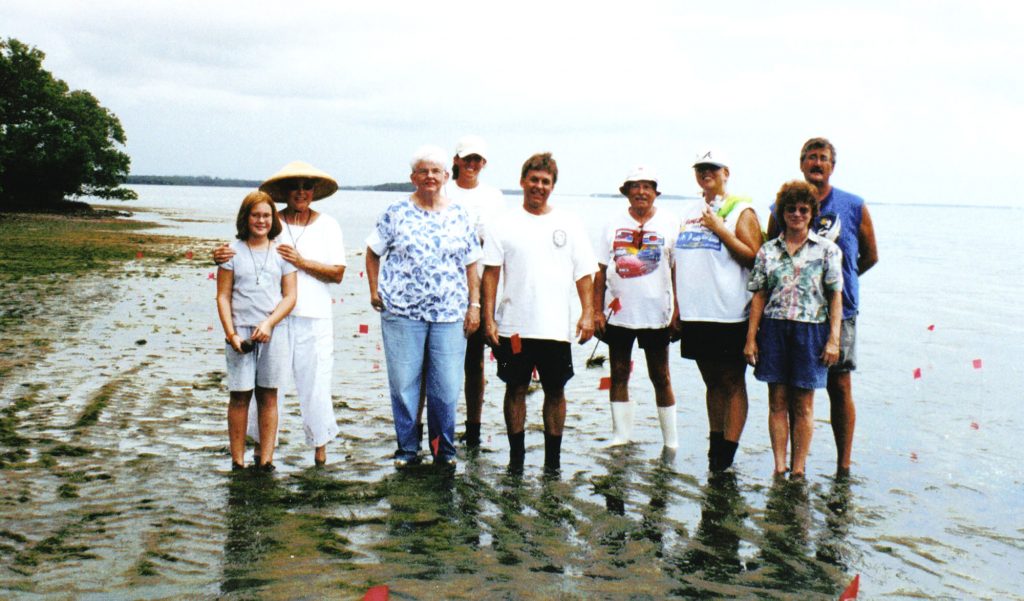The National Science Foundation’s Paleoclimate Program has awarded RRC researchers $364,528 to develop and test a new method for reconstructing Southwest Florida’s past climate using shells of the southern quahog clam, Mercenaria campechiensis.

This species is the native quahog clam of Pine Island Sound. Co-directed by geochemist Donna Surge (Iowa State University) and RRC’s environmental archaeologist Karen Walker, the 3-year project will focus on climate changes over the past 2,000 years. Thanks to the local Calusa Indians who discarded many clam shells over the centuries, archaeological sites in coastal southwest Florida (such as Pineland and Useppa) provide an ample supply of shells that contain chemical signatures of past water data which may translate into paleoclimate information.
The first phase of the project will calibrate the ratio of Strontium to Calcium as a proxy for water temperature and the ratio of the oxygen isotopes O-18 to O-16 as a proxy for salinity, using modern shells taken from quahog clams presently living at Demere Key. Later, the testing phase of the project will calculate these same ratios in ancient clam shells from Pineland to see if the results correlate with what is already known about Calusa- environment relationships from other sources such as artifacts, animal bones, and shells.
The modern clams needed for the calibration work must be M. campechiensis, the same species collected by the Calusa. With today’s farming of the nearly identical, but non-local, northern quahog, Mercenaria mercenaria, in Pine Island Sound, avoiding this species is a concern for the project. In part as a way to address this potential problem, a spin-off study is already in the works by shellfish biologist Bill Arnold of the Florida Fish and Wildlife Conservation Commission’s Marine Research Institute. He will determine to what degree the Demere southern quahog population is being “infiltrated” by the northern species. Results of this study should appear in the new year while results of the paleoclimate study are farther down the road.
This article was taken from the Friends of the Randell Research Center Newsletter Vol 2, No. 3. September 2003.